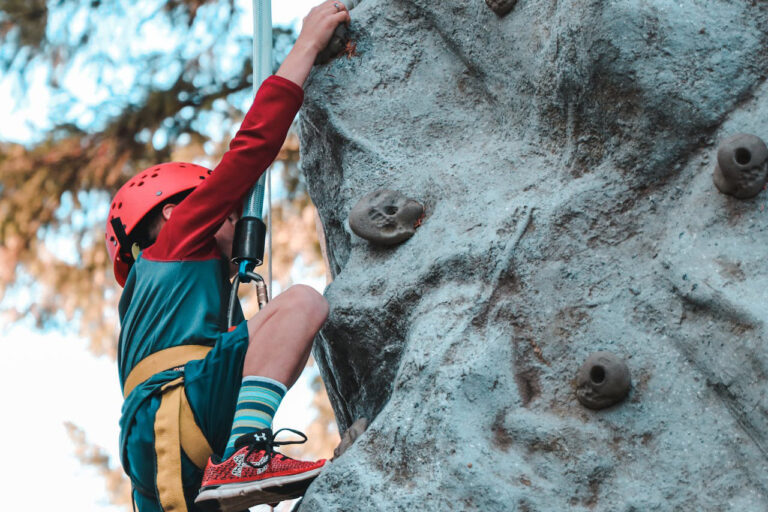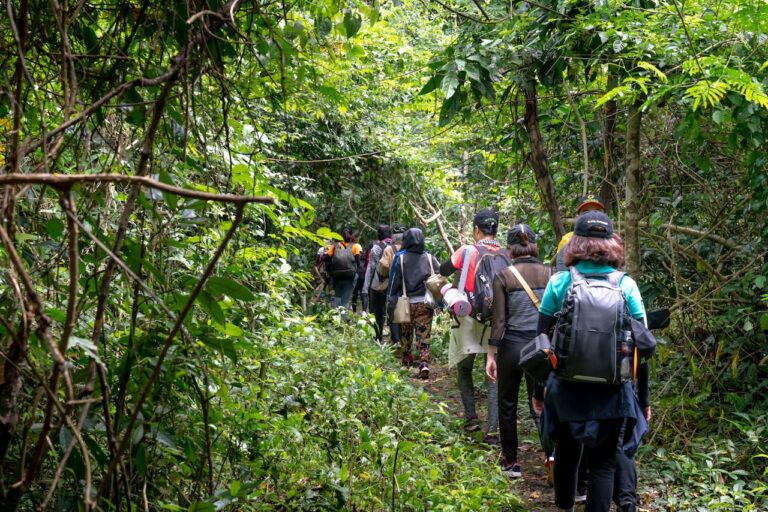Are you a shutterbug with a penchant for wild animals? Or a novice who wants to capture the flora and fauna from close quarters. No matter what, a wildlife photography tour in India checks all the boxes. From Royal Bengal Tigers in the Sunderbans to elusive Snow leopards in Spiti, it’s as diverse as it can be.
This article lists the nine most sought-after wildlife photography tours in India worth every penny! Keep scrolling to know more!
1. Nagarhole National Park, Karnataka
Nagarahole National Park (also known as Rajiv Gandhi National Park) is an absolute pleasure for wildlife photographers. Easily rated among the best wildlife photography tours in India, Nagarhole promises breathtaking landscapes and rich biodiversity. With 270+ bird species, big cats, insects, and enthralling flora, there’s no dearth of subjects to capture.
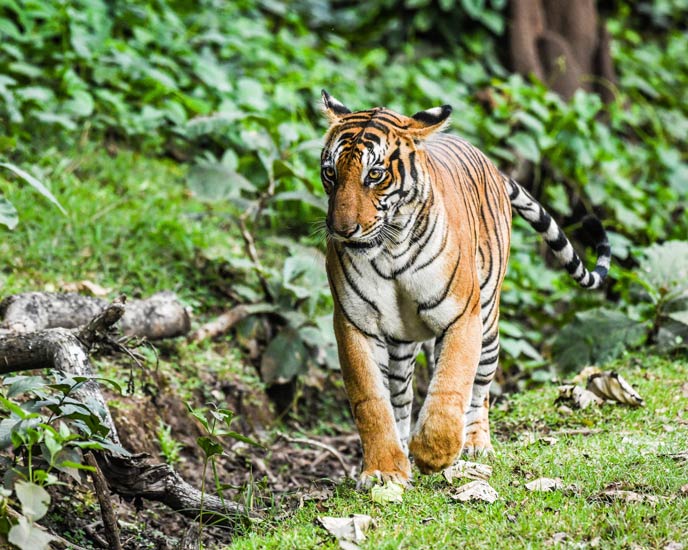
Hop on a 4/4 vehicle for an early morning chasing of the big cats. In the afternoon, ride along the Kabini River to capture delightful frames of crocodiles, Asiatic elephants, and exotic birds. The best time to visit Nagarhole National Park for wildlife photography is between November and February.
Best way to reach: Nagarhole is directly accessible via Mysore. It’s the nearest railway station (94 kms away) from where you can reach the park by road.
2. Bhadra Tiger Reserve, Karnataka
Surrender to the echoes of raptors and the aroma of wildflowers as you step inside India’s first official tiger reserve. In recent years, Bhadra Tiger Reserve has garnered the attention of lensmen all over the country. A wildlife photography tour here is generally over two hours, where you can capture the sight of a range of stray peacocks and rangale.
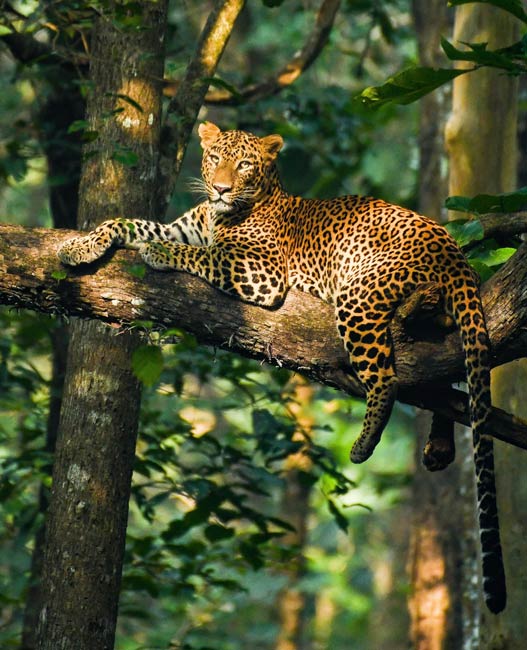
But these are dime-a-dozen sightings. The real magic unfolds when your lenses pick up the strides of a jungle leopard. However, you need to be a sharp observer. Turn your head, and you’ve missed the grand moment! A challenging terrain filled with surprising turns, Bhadra Tiger Reserve hits a different note with shutterbugs.
Elephants, big cats, exotic birds-Bhadra is home to vibrant species. But the thick, lush greenery is a bummer trying your patience. The animals hide themselves well, which makes full-frame captures a challenge. You can plan for a wildlife photography tour at the Bhadra Tiger Reserve between October and May.
Best way to reach: The nearest railway station is Kadur (51 kms away). From there, hire a cab to reach the park.
3. Jim Corbett National Park, Uttarakhand
No list of best wildlife photography tours of India is complete without the iconic Jim Corbett. Imagine racing through the jungle dirt in pebbled jeeps with the mighty Ramganga by your side, only to be stopped by a herd of Asiatic elephants! That’s the beauty of Jim Corbett.

But the real show unfolds when you encounter the majestic predator-the Royal Bengal Tiger. As India’s oldest national park, Jim Corbett has the highest number of tigers. So, there is a greater possibility of tiger sightings. There are times when you won’t be able to put aside your shooting gear with mighty pachyderms and over 600 bird species.
While at Corbett, stay at Dhikala. It’s right in the heart of the forest, so you can bask in the spirit and capture all the action. The best time to plan a wildlife photography tour at Jim Corbett is between October-February (Winter) and March-June (Summer). While monsoons are fabulous, it’s best to skip them for the safety of your photography gear.
Best way to reach: The nearest railway station to Corbett is Ramnagar (12 kms away). If you are traveling from Delhi, board the Ranikhet Express to directly reach Ramnagar.
4. Ranthambore National Park, Rajasthan
Another popular location for Big cats, Ranthambore National Park is among the best wildlife photography tours in India. Nestled amidst historical ruins, it enjoys rocky terrain and is open to all wildlife photography enthusiasts all year round. But it’s not just the tigers that draw you here. Several exotic birds, like Eurasian rollers and bar-headed geese, will give you enough reasons to stay shutter-happy!

Ranthambore is divided into ten distinct zones (including a regular zone-restricted safari and a premium one with unrestricted access). However, when planning for a dedicated wildlife photography tour, always pick the right season.
For instance, if you plan on capturing full-frame royal Bengal tigers, the best time would be the summer, preferably between March and June. During winter, your safest bets are anytime between November and March, with soft morning glows to capture impactful images. For exclusive bird photography, it’s always the classic winter season when migratory birds flock together.
Best way to reach : One can conveniently reach Ranthambore National Park from Sawai Madhopur Railway Station (10 kms away). The station is directly connected to the main Delhi-Mumbai train network.
5. Kaziranga National Park, Assam
A UNESCO World Heritage site, Kaziranga National Park is best known for its lush landscapes and conservation efforts. The primary object of photography here is undoubtedly the “Big 5” endangered species, namely the Indian Rhinoceros, Asiatic Water Buffalo, Indian Elephant, Bengal Tiger, and Barasingha.
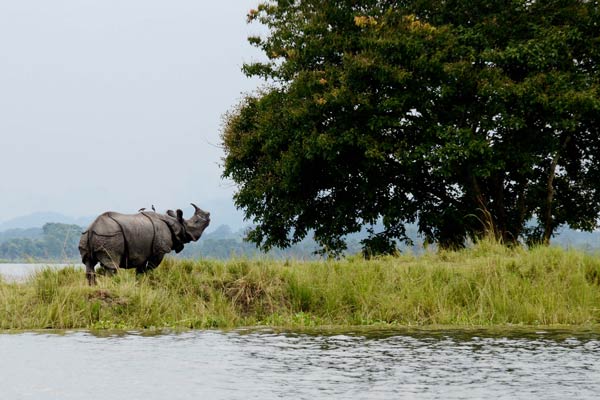
Kaziranga also has a pretty diverse Aves population, with over 400 species, including the Dusky Eagle Owl and Great Hornbill. The best time to visit Kaziranga for wildlife photography is anytime between March and April, when the climate is moderate during the day and a bit cooler at night. That way, you can equally capture the sprightly wildlife both under the sun and in low-light conditions.
Best way to reach : Like most other national parks in this list, Kaziranga is best reached via train. Furkating Junction is the nearest railway station. From there, take a cab for a two-hour drive to Kaziranga.
6. Sunderbans, West Bengal
Another UNESCO World Heritage Site, the Sundarbans, is home to the world’s largest mangrove forest. It’s right at the confluence of the Ganga, Brahmaputra, and Meghna rivers. No wonder it presents a rich ecosystem with diverse wildlife. Iconic among all species here is the Royal Bengal Tiger. Lensmen from all around India line up along the shores of Sunderbans for enthralling captures of the big cat.
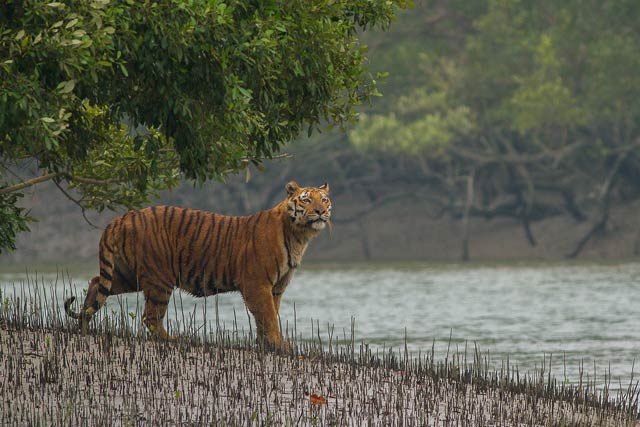
The mangrove habitat also shelters snubfin dolphins, estuarine crocodiles, and leopards. King Cobras, sea turtles, and monitor lizards add to the diversity. The Sunderbans are also home to over 250 bird species, including spoonbills, strokes, and kingfishers.
Best way to reach: Sunderbans is best accessible via road from Kolkata. However, you’ll have to park your vehicle at the port and take the ferry to the jungle. Consider renting a car instead of driving your own vehicle.
7. Jhalana Leopard Safari Park, Rajasthan
One of the best wildlife photography tours in India, Jhalana promises a unique wildlife experience. As part of India’s Project Leopard, the Jhalana reserve team has done a phenomenal job conserving the elusive cats.
Besides leopards, there are plenty of capture-worthy sights, including striped hyenas, Asian paradise flycatchers, Eurasians, blue bulls, desert foxes, and twenty reptile species. The landscape is also home to over two hundred species of flora, including Kumta, Tortilis, Khejri, Goya Kher, and Juliflora.
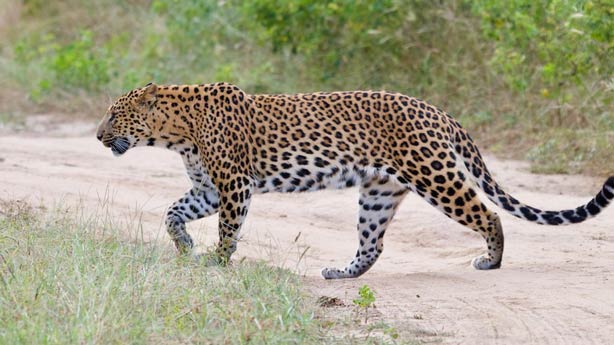
The best times to visit Jhalana are summers and monsoons. Budding wildlife photographers, don’t miss Jhalana’s guided jungle safari at night. It’s the best time to capture breathtaking shots of elusive leopards under low light conditions.
Best way to reach : Jhalana Leopard Safari Park is closest to the Jaipur International Airport at Sanganer (6 kms away). From there, take a cab or auto to the park.
8. Pin Valley National Park, Himachal Pradesh
Located in the trans-Himalayan region between the Parvati and Spiti valleys, Pin Valley National Park offers endless adventure. It is essentially part of the Great Himalayan National Park Conservation Area and has a naturally cold desert habitat. Home to over twenty animal species, a wildlife photography tour here demands patience and consistent observation.
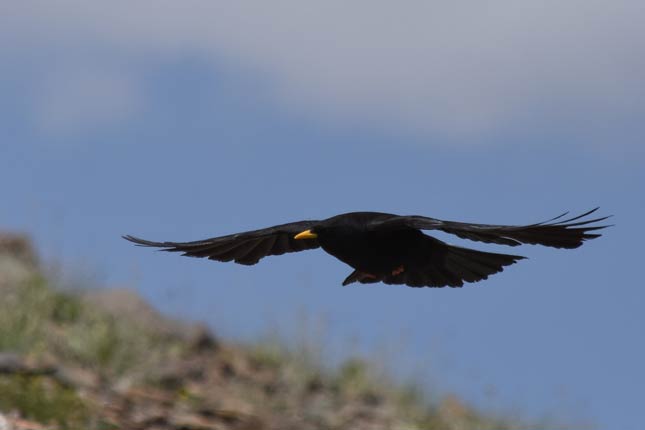
If you’re lucky, you can return home with snapshots of the rarest species on earth, like Snow Leopards, Himalayan black bears, and red foxes. Not to miss out on the diverse raptors, including the Himalayan snow cock and the golden eagle. The Pun Valley National Park is currently accessible by road alone. The best time to visit is between July and October when the “elusive cat” shines against the backdrop of sheer white mountains.
Best way to reach : Arrive at Shimla and take a bus to Tapri. From there, change a business to reach Kaza, which is closest to the Pin Valley national park (10 kms away). From there, you can either trek to the park or board a vehicle.
9. Kanha National Park, Madhya Pradesh
A hotspot for wildlife photographers, Kanha National Park is home to species that aren’t seen anywhere. From jungle cats to Bengal tigers and rare species of foxes, jackals, and antelopes, there are never-ending subjects to capture. And, of course, not to miss the pride of Kanha, the swap-deer (Barasingha), a species delightfully saved from going into extinction. Adding energy to the scene are spotted deer, sambar, hyenas, sloth bears, and blackbucks.
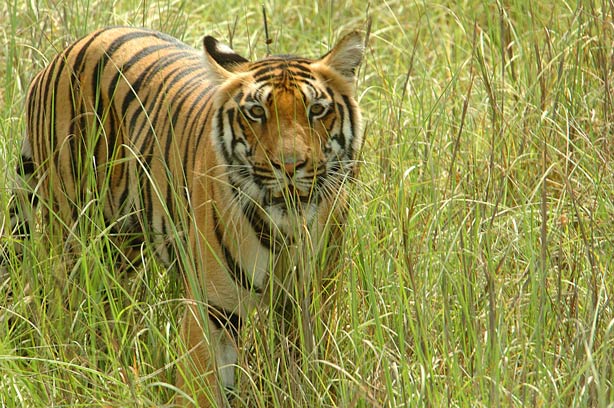
The aves life here is no less spectacular, with over 300 species comprising Indian rollers, serpent eagles, Malabar pied hornbills, and paradise flycatchers. For nocturnal captures, you’ve got honey badgers, civets, and porcupines to keep you company. Pythons and cobras also contribute to the remarkable capture range close to water bodies.
Best way to reach : The nearest railway Station to Kanha National Park is Gondia 145 kms away). From there, it’s a 3-hour drive to the park.
Conclusion
Undeniably, a wildlife photography tour in India is an unmatched experience. Each location stands out with its fair share of delightful subjects to capture. And the best part is there’s something for everyone- from an accomplished to a novice shutterbug. So, what are you waiting for? Book your tickets, pack your shooting gear, and get going. The wild outdoors awaits you!


